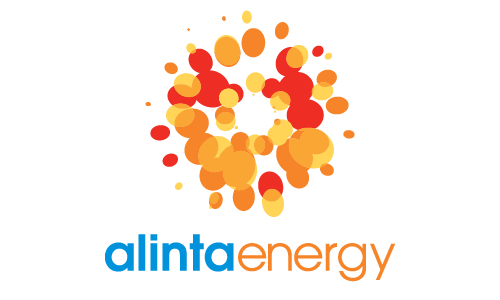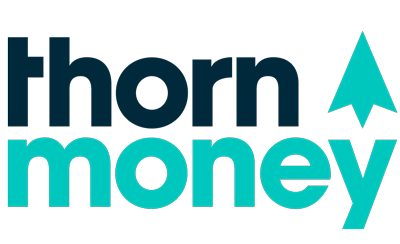100% free & takes under 2 minutes
Home > Energy Plans > Best Electricity Plans
Compare offers through Savvy to help you find the best possible electricity plan for your needs and usage.
Author
Savvy Editorial TeamFact checked













We’ve partnered with Econnex to bring you a range of energy plans to help you compare them.












We’ve partnered with Econnex to bring you a range of energy plans to help you compare them.






















Are you searching for the best electricity plan in Australia that suits your needs and budget? Look no further! Savvy is here to help you find a great electricity plan which can maximise your savings while meeting your energy requirements. Our 100% free energy comparison service will help you instantly compare a wide range of electricity offers tailored to your location.
Discover the latest energy offers available in your area including sign-up offers and bundling deals. Unlock the potential for substantial savings on your electricity bills right here by using Savvy’s user-friendly online comparison tool. Compare electricity plans from leading providers in Australia with Savvy and make the best choice for your energy needs today!
The best electricity plan available to you will depend entirely on where you live and your energy needs. This is because Australia doesn't have one single electricity grid which supplies all states and territories equally; each state has its own rules and regulations when it comes to energy plans.
Residents of the Northern Territory and Western Australia have less choice when it comes to switching electricity providers to find the best deal. This is because these areas are not part of the National Electricity Market (NEM) and have their own state-based energy rules and regulations.
However, for Aussies living in New South Wales, the ACT, Queensland, South Australia, Victoria and Tasmania, the process to find the best plan is simpler, as all these states are members of the NEM. Therefore, there are consistent regulations in place across these southern and eastern states which help make comparisons between plans and retailers easier.
Comparing retail electricity plans is the key to finding the best contract. Savvy makes this process easy for you by providing a 100% free comparison service where you can compare plans, choose the best deal from some of Australia’s leading retailers and make the switch all in one place. If you have any questions about what technical energy terms mean, you look them up in Savvy's energy glossary. Start your journey to unlock potential energy savings here today!
There are many factors to consider when comparing electricity plans to help you find the best one for your situation. These include:
Type of contract
There are two different types of electricity contracts to choose from in Australia:
When signing up for a market electricity contract, you may have the choice between variable or fixed rates for the cost of electricity usage. Variable rates can change over time based on national market price fluctuations, while fixed rates remain the same for a specified period, providing greater cost predictability and stability.
Overall cost of the plan
Retailers offer plans based on the electricity reference price and average usage in your area. They also mention the percentage difference between their price and the national reference price, allowing for easy cost comparisons. For example, one plan may offer 6% less than the electricity reference price for your area, while another may be 8% less, which means the second offer will be a cheaper plan to take on. It's important to look for a plan which fits in with your budget while still offering suitable electricity services for your needs.
Tariffs
There are different types of tariffs which can be applied to your electricity bill:
The best tariff for you depends on your electricity usage, the timing of your energy consumption, and the types of appliances you use, in addition to any solar generation considerations if you do have solar panels. Understanding your electricity usage patterns, which can be found on your recent electricity bill, will help you choose the most suitable plan for your specific needs.
Discount offers
Electricity discount offers can help you save on your energy bills, with discounts provided either as a percentage or as a fixed amount. For example, you may be offered 5% off your electricity bill if you pay it on time, or you might receive a small discount for signing up for a certain plan.
Ensure you read the terms and conditions, as some discounts may be time-limited or have specific eligibility criteria. It's important to understand which charges the discount applies to, as they may just apply to the usage portion of the bill, not the supply charge. It's also important to understand how long the discount lasts and whether it’s worth it in the long run.
Supply charge
The supply charge on an electricity bill is a fixed fee which is charged by the energy provider to cover the cost of supplying electricity to your property. It’s a daily charge measured in cents that remains the same regardless of the amount of electricity you use. The supply charge contributes to maintaining infrastructure, such as power lines and meters, necessary for delivering electricity to your home or business premises.
The supply charge is separate from the usage charge (which is based on the actual amount of electricity you use). Therefore, you’ll have a supply charge even if you use no electricity, as you’re still connected to the national grid. Each provider may have a different supply charge, so it’s important to compare these to help you find the best plan.
Fees
Consider the fees charged by the electricity retailer you’re considering, such as:
Comparing fees will help you identify the provider with the lowest overall fees in their billing package.
If you have solar panels and are looking for the best electricity plan, you should also consider:
Solar electricity feed-in tariff
The feed-in tariff (also called the ‘buy-back rate’) is the rate at which your energy company pays you for electricity generated by your solar panels and fed back into the national electricity grid. It’s typically measured in cents per kilowatt-hour (c/kWh).
Compare both fixed-rate and variable-rate feed-in tariffs to determine which aligns better with your system’s energy generation and your family’s electricity usage patterns.
Comparing electricity plans is the most effective way to find the best plan for your specific needs and electricity use. All households are different, so it’s only by comparing plans that you’ll be able to find a plan which best fits your electricity use pattern and needs. Savvy’s 100% free comparison service lets you compare energy plans quickly and easily, and there’s no limit to the number of times you can use our comparison service per year.
Take the time to compare the rates and tariffs offered by different electricity providers. Look beyond the headline price and consider factors such as peak and off-peak rates, feed-in tariffs for solar and any additional charges or discounts which may apply to you.
Combining your electricity and gas plans with one retailer can save you money, as many retailers offer bundling discounts. This could potentially save you from 5% up to 20% on the total bill when you combine both gas and electricity services with the same provider. Consider whether doing so may be the cheapest, most convenient and (ultimately) best option for you.
If you receive Centrelink assistance, you may be eligible for energy concessions from the Australian government. When comparing and swapping electricity providers, make sure your new provider will apply your concession to the electricity plan you choose to switch to.
Every home needs an electricity connection. From powering your fridge to your television, it's important to know the differences between electricity plans before you buy.
Who doesn't love a warm, cozy bedroom in winter or a hot shower on a cold morning? Natural gas helps heat things up in your home, so getting the right gas plan is crucial.
Solar panels are becoming increasingly common as Australians make a sustainable switch. Your connection to the grid is still important for when the sun isn't out, though.
Energy providers are now providing plans to Australians who want to make use of more environmentally friendly sources. These are often known as green energy plans.
It isn't all about homes, though. Electricity and gas are vital for small, medium and large businesses around Australia, so some retailers offer specialist plans to match.
You won’t need to pay a cent to compare a variety of energy plans online through Savvy, as it’s 100% free.
By filling out your form and providing a recent energy bill, you can have all the facts and figures worked out for you.
When you fill out your quote, you’ll be able to consider offers from some of the leading energy providers in Australia.
Several of the best electricity plans in Australia do come with energy apps. These provide convenient access to energy use information, including the potential to send you alerts when your electricity use is unusually high.
Using an energy app, you may also have access to your billing details and useful account management features, as well as being able to schedule bill payments through your app. They may help you track your electricity consumption, monitor your usage patterns, pay your bills and receive personalised tips on how to save energy and reduce costs. To use many of these app features, however, you may need to have a smart electricity meter.
Both fixed-rate and variable-rate electricity plans have their advantages. Fixed-rate plans offer price stability over a specific period, providing budget certainty. Variable-rate plans, on the other hand, may offer flexibility and the potential to take advantage of lower prices when market rates drop. Consider your risk tolerance and preference for predictability when choosing between the two options and determining which is best for you.
Opting for a green electricity plan allows you to support renewable energy generation and reduce your carbon footprint. These plans typically source electricity from renewable sources like wind, solar, or hydro power. By choosing a green plan, you contribute to a cleaner environment and promote the growth of sustainable energy. It's an excellent option for environmentally conscious individuals who want to make a positive impact.
Yes – however, switching providers during a fixed-term contract may result in early exit fees, depending on the terms of your contract. It's important to review the contract details and calculate if the potential savings from switching outweigh the fees. However, once your fixed-term contract expires, you’re generally free to switch providers without any penalties.
Disclaimer:
Savvy is partnered with Econnex Comparison (CIMET Sales Pty Ltd, ABN 72 620 395 726) to provide readers with a variety of energy plans to compare. We do not compare all retailers in the market, or all plans offered by all retailers. Savvy earns a commission from Econnex each time a customer buys an energy plan via our website. We don’t arrange for products to be purchased directly, as all purchases are conducted via Econnex.
Any advice presented above is general in nature and doesn’t consider your personal or business objectives, needs or finances. It’s always important to consider whether advice is suitable for you before purchasing an energy plan. For further information on the variety of energy plans compared by Econnex, or how their business works, you can visit their website.
Quantum Savvy Pty Ltd (ABN 78 660 493 194) trades as Savvy and operates as an Authorised Credit Representative 541339 of Australian Credit Licence 414426 (AFAS Group Pty Ltd, ABN 12 134 138 686). We are one of Australia’s leading financial comparison sites and have been helping Australians make savvy decisions when it comes to their money for over a decade.
We’re partnered with lenders, insurers and other financial institutions who compensate us for business initiated through our website. We earn a commission each time a customer chooses or buys a product advertised on our site, which you can find out more about here, as well as in our credit guide for asset finance. It’s also crucial to read the terms and conditions, Product Disclosure Statement (PDS) or credit guide of our partners before signing up for your chosen product. However, the compensation we receive doesn’t impact the content written and published on our website, as our writing team exercises full editorial independence.
For more information about us and how we conduct our business, you can read our privacy policy and terms of use.
© Copyright 2024 Quantum Savvy Pty Ltd T/as Savvy. All Rights Reserved.
© Copyright 2024 Quantum Savvy Pty Ltd T/as Savvy. All Rights Reserved.
Quantum Savvy Pty Ltd (ABN 78 660 493 194) trades as Savvy and operates as an Authorised Credit Representative 541339 of Australian Credit Licence 414426 (AFAS Group Pty Ltd, ABN 12 134 138 686). We are one of Australia’s leading financial comparison sites and have been helping Australians make savvy decisions when it comes to their money for over a decade.
We’re partnered with lenders, insurers and other financial institutions who compensate us for business initiated through our website. We earn a commission each time a customer chooses or buys a product advertised on our site, which you can find out more about here, as well as in our credit guide for asset finance. It’s also crucial to read the terms and conditions, Product Disclosure Statement (PDS) or credit guide of our partners before signing up for your chosen product. However, the compensation we receive doesn’t impact the content written and published on our website, as our writing team exercises full editorial independence.
For more information about us and how we conduct our business, you can read our privacy policy and terms of use.
Our consultant will get in touch with you shortly to discuss your finance options.
